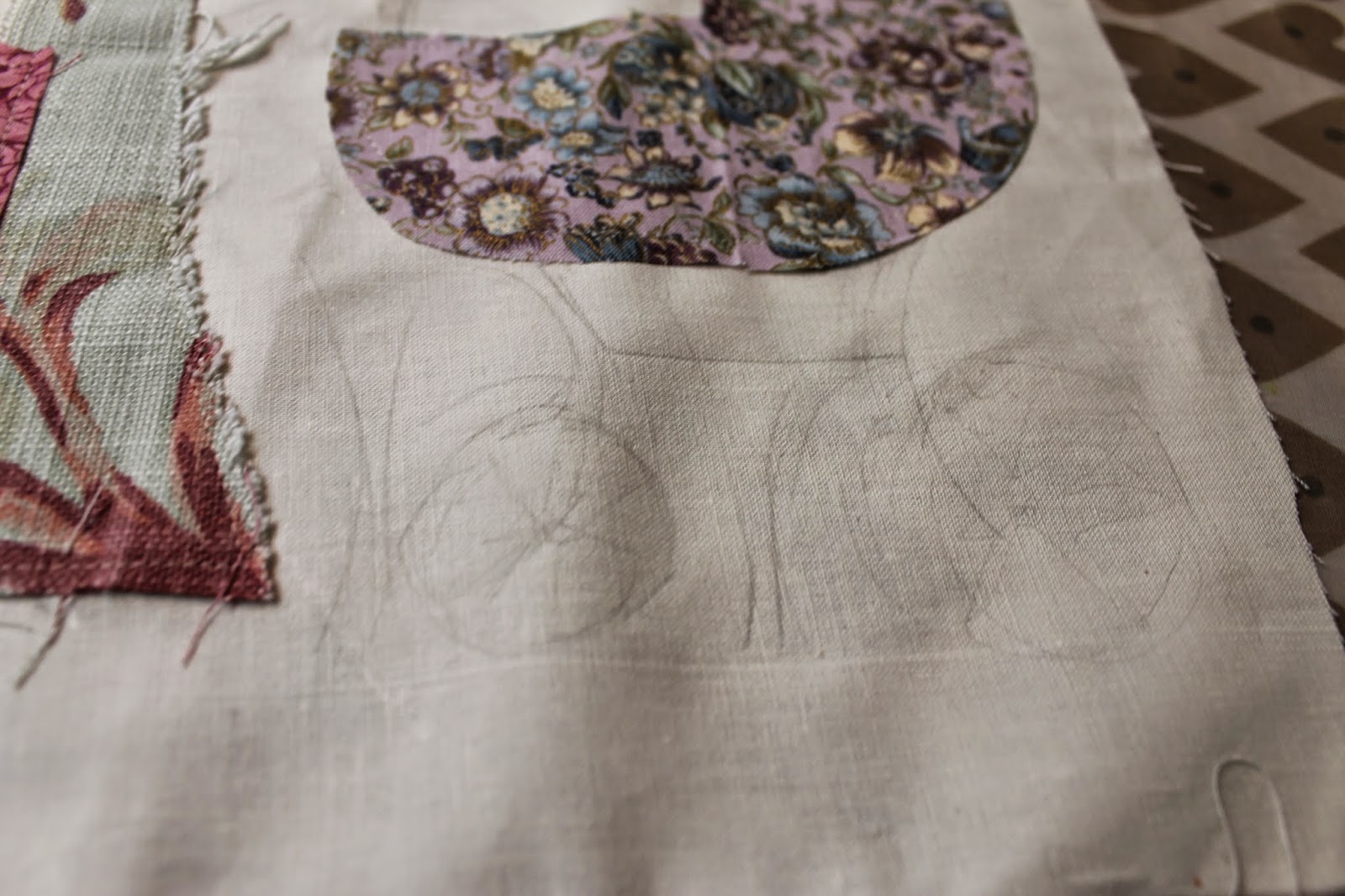For those of you who don't know, free-machine embroidery is where you lower the feed dogs (the two metal clamps on the sewing machine that drag the fabric through to create a straight stitch) and sew "freestyle".
Because there are no feed dogs, the machine can stitch in any direction, any size stitch, at any pace you like. You can create any shape or line style you can imagine. I like to draw with machine embroidery, but I will also show you how to use it to create pattern.
When I'm free-machine "drawing" on a piece, like this one here that I have already attached some scraps of fabric to, first I like to sketch out my design lightly in pencil. You don't have to do this, it just makes it easier to follow when it is under your needle.
Lower the feed dogs on your machine, and attach a Free Machine Foot (it is the one that has a small circle at the bottom rather than the ordinary foot). If you don't have a free machine foot, or the ability to lower the feed dogs, I know for some machines you can get metal plates that attach on top to cover the feed dogs to stop them interfering. If you can't do that either, then you may want to ask to use another machine; most Adult Education centres will have machines in them that you may be able to use.
The most important thing about free machine embroidery is to take your time first of all. Get the feel of the machine, because it is a VERY different feel to normal sewing. It can be tempting to let the machine get away from you and you start panicking and sew faster, but if that happens just stop, take a breath, maybe take the needle out and unpick that line. Start slow, and soon you will get more confident.
I love free-machine embroidery because it can lend an excellent sketchy effect (that is, an effect of having been sketched, not an effect of becoming suspicious) which I find you can't really get with hand stitching, at least not without being very adept at it.
Free-machine embroidery does pucker your fabric somewhat, if you aren't used to the way the stitches are acting. If you are scared of this happening, take it really slow and make sure to hold the fabric tightly in your hands as you guide it through the needle. You can also attach a piece of paper to the back of your work to make it easier to work with, and then simply pull the paper off the back afterwards.
Once you try it, you may become addicted!



















































